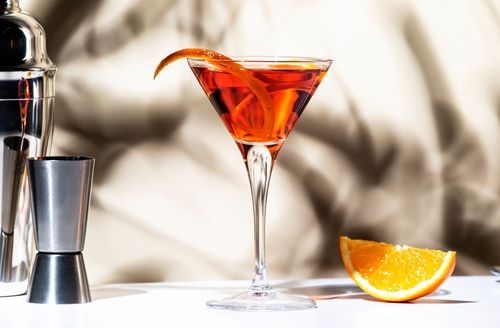
Italian Drinks Infuse U.S. with Vibrant Cocktail Culture
- Jun 15, 2024
Italian drinks have spiritedly assimilated into U.S. bars and eateries, introducing Americans to the joy of lively pre-dinner spritzes, numerous spins on the classic Negroni, and multifaceted cocktails championing Italian amaro.
The accelerated popularity of the Aperol Spritz largely catalyzed the adoption of amari (plural for amaro) and vivid red bitter liqueurs in the United States. Rudi Carraro, Global Brand Ambassador and Educator for Gruppo Montenegro, parent company of Select Aperitivo and Amaro Montenegro, attests to the spritz's impact, noting the sudden introduction of amaro and aperitivo on menus worldwide.
These unique liqueurs, each playing a distinct part in Italian drinking culture, are commonly termed "bitter liqueurs," despite their notable differences. Antonio Ferrara, Bar Manager at Aman Venice, believes more discerning understanding of aperitivo and amaro’s place in Italian culture can enhance Americans' appreciation of the drinks.
It’s important to note that while aperitivi and amari may be legally grouped together because of their predominant bitter flavor and alcohol content above 15%, there are more overlapping attributes within their making. Guiseppe “Peppe” Doria, Volare’s owner and bar manager in Bologna, echoes this saying that the intricacies between individual liqueurs can often be very subtle although the overall tradition of these drinks is woven into the cultural fabric of Italy.
Despite similar features, Italians wouldn't say a red aperitivo liqueur and an amaro are the same. The disparity lies in how and when they are consumed. Aperitivo beverages, like the Negroni Sbagliato and the Spritz, have carved their niche in Italy’s culinary culture long before catching American disposition.
Antonio Ferrara describes aperitivo as the customary Italian pre-dinner social ritual involving light drinks and bite-sized appetizers. Bitter liqueurs are thought to stimulate the appetite contributing to their central role in the aperitivo tradition. They are usually combined with sparkling water, vermouth, and prosecco for effervescent cocktails.
Amaro quietly made its entrance into U.S. bars through its use as a digestif following meals, a tradition carried from Italy which stems from the belief in properties aiding digestion. Originally conceptualized by monks and pharmacists as a remedy and created by infusing spirits with herbal and botanical elements, amari come with a wide range of flavors reflecting various regional influences.
Generally more robust, higher in alcohol content, and more complex in flavor, amaro is served neat or on the rocks, with preferences for temperature varying among drinkers.
Understanding these nuances is crucial for those passionate about Italian beverages and cuisine. Guiseppe Doria believes that being schooled in the various liqueurs can help consumers and bartenders navigate the wide world of Italian drinks, bringing an authentic experience to all.






